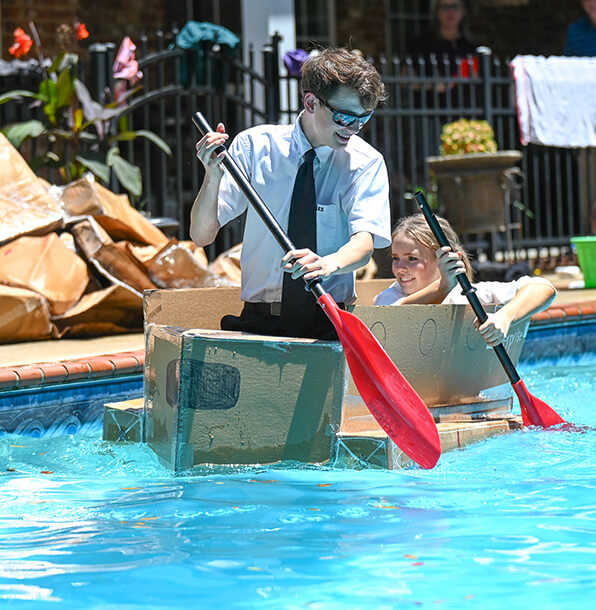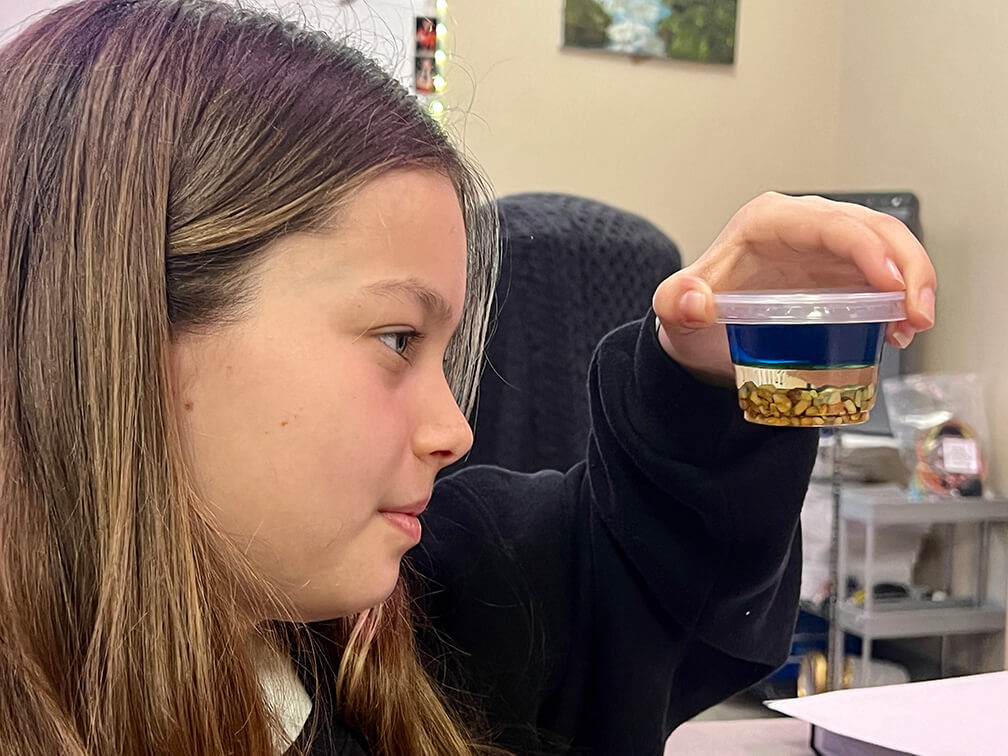
Engineering at St. Luke's.
S
t. Luke’s Episcopal School offers a unique engineering program that is popular among the students. Introduction to Engineering, Civil Engineering and Architecture, and Aerospace Engineering are offered for high schoolers. St. Luke's addition of Project Lead the Way to its STEM+M curriculum has further helped to develop the engineering program.
Introduction to Engineering, taught by Mr. Mutchnick, is a wonderful class that sets the students up with a firm foundation in the basics of engineering. Last week they were challenged to build the tallest tower with limited tape and have it stand for 60 seconds! Mr. Mutchnick was a practicing engineer and licensed Professional Engineer for 13 years and has been teaching for over 30. When asked what his favorite thing about teaching was he said, “I love watching my students grow and learn.” He is a very hands-on teacher and has many advanced projects coming up for his Introduction to Engineering class. He is looking forward to teaching the engineering students how to build working circuit boards and how to properly use them.
St. Luke’s Civil Engineering and Architecture class is one of the longest running classes in the engineering program. This class teaches students building and site design and teaches them how to use mathematical, scientific, and engineering practices to design projects through a 3D architectural design software. Last year, students of the Civil Engineering and Architecture class were able to start a project by creating a design in the 3D design software and then replicate it with the materials given.
 Physics plays an important role in engineering. Without it you are unable to understand the basics, leaving other larger tasks nearly impossible. Mrs. Haynes teaches a physics class that is very hands-on and involves lots of projects. Some of these projects are building and sailing a boat to learn about Archimedes’ Principle and buoyancy, studying force, motion, and energy to create roller coasters, exploring Newton’s Laws by building then testing the strength of bridges, and fabricating Rube Goldberg machines.
Physics plays an important role in engineering. Without it you are unable to understand the basics, leaving other larger tasks nearly impossible. Mrs. Haynes teaches a physics class that is very hands-on and involves lots of projects. Some of these projects are building and sailing a boat to learn about Archimedes’ Principle and buoyancy, studying force, motion, and energy to create roller coasters, exploring Newton’s Laws by building then testing the strength of bridges, and fabricating Rube Goldberg machines.
St. Luke’s student and athlete, Aidan Fleming, has been deeply impacted by the engineering program and is looking into studying something in that field in college. Aidan said this when asked if he thought the engineering program was beneficial for his future, “It can help you decide if engineering is a thing that you are interested in and can teach you more about the subject.” He said the assignment he enjoyed the most was creating a circuit and then using that circuit to make lego cars move.
 The engineering program at St. Luke’s is not only for high schoolers; engineering concepts are taught to our Wildcats in lower school and middle school. Kindergarteners learn the basics by observing pushes and pulls. The science of flight unit, taught to third and fourth graders, introduces them to different aspects of flight. It engages them in designing, building, and testing through projects like, testing paper airplanes, learning how airplanes take off and fly, studying lift, drag, force, and weight, and hearing about the importance of air traffic controllers. Sixth grade studies the new Flight and Space course which highlights all things aerospace. With the mindset of real engineers, these middle schoolers strategize missions to Mars and tackle topics under space exploration and habitation. The rest of the middle school gets to experience a Design and Modeling class. This class features the use of many tools that help with designing, modeling, and construction. The ultimate goal of this class is to utilize the tools they’ve been given to design a therapeutic toy for children with cerebral palsy.
The engineering program at St. Luke’s is not only for high schoolers; engineering concepts are taught to our Wildcats in lower school and middle school. Kindergarteners learn the basics by observing pushes and pulls. The science of flight unit, taught to third and fourth graders, introduces them to different aspects of flight. It engages them in designing, building, and testing through projects like, testing paper airplanes, learning how airplanes take off and fly, studying lift, drag, force, and weight, and hearing about the importance of air traffic controllers. Sixth grade studies the new Flight and Space course which highlights all things aerospace. With the mindset of real engineers, these middle schoolers strategize missions to Mars and tackle topics under space exploration and habitation. The rest of the middle school gets to experience a Design and Modeling class. This class features the use of many tools that help with designing, modeling, and construction. The ultimate goal of this class is to utilize the tools they’ve been given to design a therapeutic toy for children with cerebral palsy.
All of the classes that St. Luke’s offers are created to be utilized not only for the benefit of the student and their future, but to also impact the community around them. After a semester or year of an engineering class, the goal is for the student to be able to take what they’ve learned and implement it into their daily lives for the better of themselves and others.
